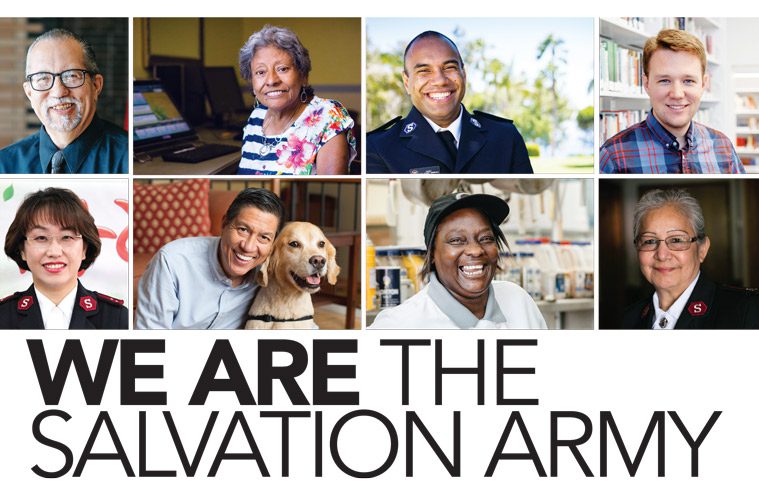“It is easy to become overly invested in conveying our viewpoint—and when that happens, we stop listening.”
Here are a few tips to help you reach across the aisle.
I’m right, you’re wrong. I’m good, you’re bad. When we demonize or idolize, we eliminate the middle ground. It’s all or nothing. It’s my way or the highway. When we scapegoat and play the blame-game, we eliminate the space for compromise. There is no room to talk. There is nowhere to go. To be polarized is to be paralyzed.
I wrote these words in 2011—six years ago—in my Psychology Today blog, “A Headshrinker’s Guide to the Galaxy.” At that time, the public discourse was difficult, bogged-down, and divisive—but the polarization in today’s world has reached a fever pitch. Dividing lines have become deeper and more rigid. The ties that bind us together, weaker and more fragile. Violence erupts without warning. It has become more and more difficult to talk with one another, especially with folks outside of our closest circles. We may still think of “the enemy” as someone from a distant country but these days, “the enemy” just as easily could be a neighbor, right across the aisle or next door.
Many of us encounter this kind of divisiveness in relationships, politics, religion, health care, taxes, morality, and education. It is hard to talk with one another about these important matters, particularly when we hold such different points of view and hold them so passionately. It is easy to become overly invested in conveying our viewpoint—and when that happens, we stop listening. Our neighbor does the same. So many discussions on social media or at the water cooler or at a dinner party end in a stalemate—or worse, hurt and angry feelings with no constructive outcome and an overall sense of demoralization.
Psychologists call the mental operations underlying this divisive dynamic “projection” and “splitting.” When we project, we see an unacknowledged and hated aspect of ourselves in another person. We think that our small-mindedness, our rigidity, our superiority belongs to “them” not to “us.” Projection goes hand-in-hand with splitting, which creates the them vs. us, wrong vs. right, bad vs. good division in the first place. Projection and splitting tend to have a lot of emotional heat behind them, often making it difficult to think. The feelings just take over.
Can you relate? Do you find yourself getting into a fight, so much so that you feel you have temporarily lost your mind? You get so heated that you dig your heels in, deeper and deeper, defending your point of view to the nth degree—even though some part of you is looking on, recognizing that you have taken it too far.
Maybe you get mean. Or you forget what you were arguing about in the first place. Or you find yourself making up things to justify your point, even though they don’t really make sense—even to you. Or, if you run out of ideas to support your point of view, maybe you turn the tables and accuse the other person of all kinds of stupidity and cruelty—even though you know him or her to be a mostly reasonable person.
The further the split, the more difficult it is to build a bridge. The more invested we are in our point of view as being right—morally or intellectually or practically superior—the more difficult it is to listen. The more invested we are in viewing the other person as wrong—silly or ridiculous or stupid or bad—the more difficult it is to compromise, change, and find a way out or a way through.
This dynamic sours marriages and friendships. It keeps alive old and stale grievances. It perpetuates family feuds. When these dynamics dominate on a broader scale—such as in politics and economics—it keeps us from solving problems that need to be solved and really can be solved.
So what can we do to help ourselves when we get polarized in these ways? What can we do to reach across the aisle? Here are a few guidelines:
- Initiate a new conversation. Reach out and try to open a channel with someone who thinks and feels differently than you do.
- Be humble. Approach the conversation with humility, recognizing that no one has all the right answers and that we all have a lot to learn.
- Listen, listen, listen. Listen with an open mind, without responding with “yes, but…” Really try to take in and think about the other person’s point of view.
- Be cool. Express your ideas with the heat turned down. Focus on what you value and try to be constructive.
- Find common ground. When the conversation begins to become polarized, refocus on what you have in common—at the very least, most people want to get along and to have their relationships, their work, their church, and their country function well.
- Think big. If you can’t find common ground, at least remind yourselves that problems are complex not simple. Multiple points of view are worth considering. That’s why you are having this conversation in the first place.
- Keep it short. I have been involved with many conversations that start off well but go on for too long, at which point the splitting and projection increase in intensity. Stop before the conversation turns south. A little bit of bridge-building goes a long way.
- Try to end on a positive note. If this one conversation ends well, it becomes a foundation for more constructive conversations in the future.

















